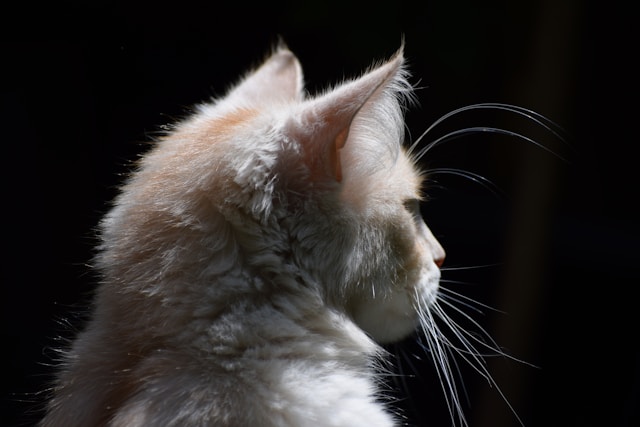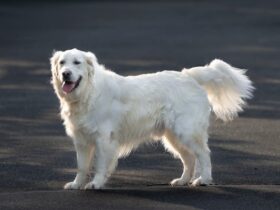Cat hairballs, or trichobezoars, are a common issue for feline companions. They occur when cats ingest hair during grooming, which then forms a dense, clumpy mass in their stomach. While hairballs are usually not serious, they can cause discomfort and health issues if not managed properly. This guide provides detailed information on preventing and treating cat hairballs to keep your feline friend healthy and comfortable.
1. Understanding Cat Hairballs
What Are Hairballs?
Hairballs are cylindrical masses of undigested hair that form in a cat’s stomach. They result from the grooming process, during which cats ingest loose hair. The ingested hair can’t be digested, so it accumulates in the stomach and eventually needs to be expelled, often through vomiting.
Why Do Cats Get Hairballs?
- Grooming Behavior: Cats groom themselves regularly, and during this process, they swallow loose hair. Hairballs are more common in cats with long or thick fur.
- Shedding: Cats that shed more frequently are at higher risk of developing hairballs due to increased hair ingestion.
- Diet and Digestive Health: Diets low in fiber or with poor digestibility can contribute to hairball formation. Cats with digestive issues may also be more prone to hairballs.
2. Symptoms of Hairballs
Common Signs
- Vomiting: Cats may vomit hairballs occasionally, often bringing up a cylindrical mass of hair.
- Coughing or Hacking: Some cats may cough or hack in an attempt to expel hairballs, even if they don’t vomit.
- Constipation: Hairballs can cause constipation if they obstruct the intestines or make the stool harder to pass.
- Decreased Appetite: Cats may eat less or refuse food if they feel discomfort from hairballs.
- Lethargy: A cat with frequent hairballs may seem lethargic or less active due to discomfort.
3. Prevention Strategies
Grooming and Hair Management
- Regular Brushing: Brush your cat regularly to remove loose hair and reduce shedding. Long-haired breeds may require daily brushing, while short-haired cats benefit from weekly grooming.
- Deshedding Tools: Use deshedding tools or grooming gloves designed to remove loose hair and reduce the amount of hair ingested during grooming.
Dietary Adjustments
- High-Fiber Diet: Provide a diet high in fiber to help move ingested hair through the digestive tract. Fiber aids in the natural passage of hairballs and can reduce their formation.
- Hairball Formulas: Consider commercial cat foods specifically formulated to manage hairballs. These formulas often include added fiber and other ingredients to support hairball control.
Hydration
- Encourage Water Intake: Ensure your cat has access to fresh, clean water at all times. Proper hydration helps maintain a healthy digestive system and can reduce the likelihood of hairballs.
4. Treatment Options
Home Remedies
- Hairball Remedies: Over-the-counter hairball remedies, such as lubricating gels or treats, can help ease the passage of hairballs through the digestive tract. These products typically contain lubricants to help hairballs move more easily.
- Pet-safe Oils: A small amount of olive oil or fish oil added to your cat’s food can help lubricate the digestive tract. Consult your veterinarian for proper dosage and suitability.
Veterinary Treatments
- Prescription Medications: If hairballs are frequent or problematic, your veterinarian may prescribe medications to help manage the condition. These may include hairball-specific formulations or medications to address underlying digestive issues.
- Medical Evaluation: If your cat has severe or persistent symptoms, consult your veterinarian for a thorough evaluation. Underlying health issues may need to be addressed, and your vet can provide tailored treatment options.
5. When to See a Veterinarian
Signs of Serious Issues
- Frequent Vomiting: If your cat vomits frequently or struggles to expel hairballs, it may indicate a more serious problem. Persistent vomiting can lead to dehydration and other complications.
- Constipation or Obstruction: Severe constipation or signs of gastrointestinal obstruction, such as straining to defecate, should be evaluated by a veterinarian.
- Loss of Appetite: If your cat shows a significant decrease in appetite or refuses to eat for more than a day, seek veterinary advice.
Diagnostic Tests
- Physical Examination: Your vet will conduct a physical examination to assess your cat’s overall health and check for signs of discomfort or obstruction.
- Imaging: In some cases, your veterinarian may recommend X-rays or ultrasound to evaluate the presence of hairballs or other digestive issues.
6. Long-Term Management
Maintaining a Healthy Weight
- Balanced Diet: Ensure your cat maintains a healthy weight through a balanced diet and appropriate portion sizes. Obesity can exacerbate digestive issues and contribute to hairball formation.
- Regular Exercise: Encourage regular play and exercise to support overall health and prevent weight gain.
Ongoing Grooming
- Routine Grooming: Continue regular grooming to manage shedding and reduce the amount of loose hair ingested by your cat.
- Monitor Hairball Frequency: Keep track of how often your cat experiences hairballs and adjust grooming and dietary strategies as needed.
7. Conclusion
Dealing with cat hairballs requires a combination of prevention and treatment strategies to keep your feline friend comfortable and healthy. By understanding the causes and symptoms of hairballs, you can implement effective grooming and dietary measures to minimize their occurrence. Regular veterinary check-ups and prompt attention to any serious symptoms are essential for managing hairballs and ensuring your cat’s well-being. With the right approach, you can help your cat navigate the challenges of hairballs and maintain a happy, healthy life.











Leave a Reply